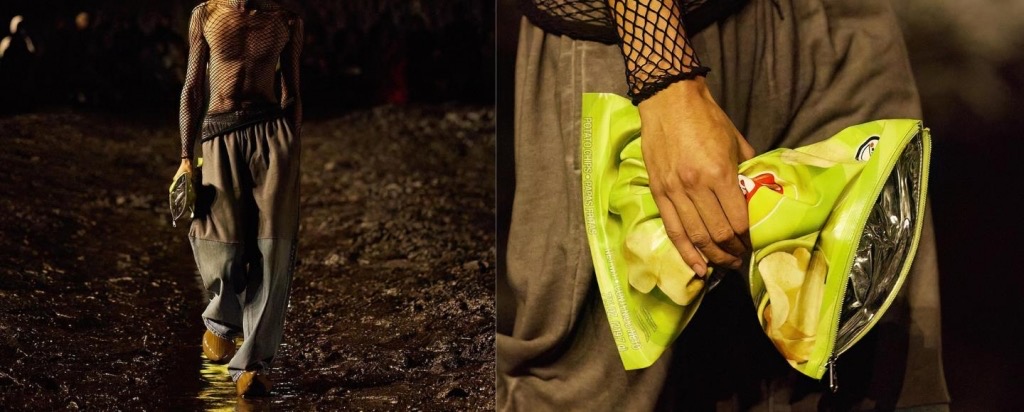
Photos from the Balenciaga spring-summer 2023 show instantly circled the Internet: a procession of interesting people bogged down in the off-road in torn jeans, shabby biker jackets and shining floor-length dresses, the hem of which is mercilessly covered with drops of dirt. Balenciaga's creative director explained The Mud Show's set design as a desire to "stay grounded" and "get to the bottom of the truth" - the sight of luxurious dresses dragging through puddles is really grounding. Another resonant idea is unusual bags: gutted teddy bears and dolls, sleeve models that solve the problem of falling straps, and accessories in the form of a pack of chips and baby carriers. The final image was a dress made from dismembered Le Cagole bags.
Berlin-based architecture firm Sub and Spanish performance artist Santiago Sierra created the unsettling mud show location for The Mud Show. The actions of one of the sharpest and most provocative contemporary artists, representing a violent protest against human humiliation, have always been paradoxical.
In December 1999, he tattooed a 250-centimeter line on the backs of six volunteers for a small fee as a symbol that people in third world countries are willing to sacrifice their health for a minimal amount of money. In October 2001, he shaved a line on the heads of two drug addicts for a dose, emphasizing that the abundance of drugs in Puerto Rico is a way to destroy the indigenous population.

Representing Spain at the 2003 Venice Biennale, the artist covered its name with garbage bags and bricked up the main entrance. In August 2011, he projected the word "No" onto the pope during his visit to Madrid. And in 2010, Sierra refused the Spanish State Prize in the field of visual arts, the amount of which is € 30 thousand, sending a letter to the Minister of Culture of Spain stating that the prize from the state is unacceptable for him as "a free artist who considers the state illegitimate and criminal ".

Thanks to the master of performance, disenfranchised emigrants and refugees, fallen women and drug addicts found themselves in the very center of elite bourgeois culture - in the spaces of galleries and progressive art institutions, where they are ready to do everything for a meager fee: just stand, performing the functions of a “living sculpture”; paint their heads in the color chosen by the artist; sit inside boxes for several hours a day; act as brackets, holding heavy wooden blocks on their shoulders.
In her …
